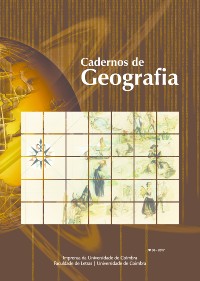Please use this identifier to cite or link to this item:
https://hdl.handle.net/10316.2/91158| DC Field | Value | Language |
|---|---|---|
| dc.contributor.author | Talavera, Javier Martí | - |
| dc.contributor.author | Marín, Ramón García | - |
| dc.contributor.author | Muñoz, Daniel Moreno | - |
| dc.contributor.author | Álvarez, Víctor Ruíz | - |
| dc.date.accessioned | 2017-12-29T16:14:40Z | |
| dc.date.accessioned | 2020-09-22T12:43:27Z | - |
| dc.date.available | 2017-12-29T16:14:40Z | |
| dc.date.available | 2020-09-22T12:43:27Z | - |
| dc.date.issued | 2017 | - |
| dc.identifier.issn | 0871-1623 | - |
| dc.identifier.issn | 2183-4016 (PDF) | - |
| dc.identifier.uri | https://hdl.handle.net/10316.2/43410 | - |
| dc.description.abstract | Gran parte de la riqueza patrimonial intangible en España deriva de los distintos tipos de festejos patronales que celebran los municipios y localidades, cargados de singularidad, historia y belleza. Los Caballos del Vino son un ejemplo de tantos, con más 250 años de antigüedad, y su origen reside en la realización de un rito que tenía como fin bendecir el vino en actos litúrgicos. Actualmente, es uno de los festejos más llamativos del país, en el cual unos caballos engalanados con enjaezamientos bordados a mano realizan una singular carrera cargada de emoción que atrae cada año a millares de personas de todo el mundo a esta localidad. Su candidatura para ser incluida en la Lista de Patrimonio Inmaterial de la Humanidad lo convierte en un referente cultural y turístico regional y nacional. | spa |
| dc.description.abstract | Much of the intangible wealth of Spain derives from the different types of patron celebrations that are celebrated in their towns and localities, loaded with uniqueness, history and beauty. The Wine Horses are an example of so many, more 250 years old; its origin lies in the realization of a rite that was intended to bless wine in liturgical acts. Nowadays it is one of the most striking festivities in the country, where horses adorned with hand-embroidered harnesses perform a singular race f ull of emotion that attracts tho usands of people from all over the world to this town every year. His candidacy to be included in the List of Intangible Heritage of Humanity become it in a regional and national cultural and tourist reference. | eng |
| dc.language.iso | spa | - |
| dc.publisher | Imprensa da Universidade de Coimbra | - |
| dc.rights | open access | - |
| dc.subject | Caballos del Vino | - |
| dc.subject | patrimonio inmaterial | - |
| dc.subject | turismo | - |
| dc.subject | Caravaca de la Cruz | - |
| dc.subject | Wine horses | eng |
| dc.subject | intangible heritage | eng |
| dc.subject | tourism | eng |
| dc.subject | Caravaca de la Cruz | eng |
| dc.title | Los Caballos del Vino: tradición, patrimonio y turismo en Caravaca de la Cruz (Murcia, SE de España) | por |
| dc.title.alternative | The Wine Horses: tradition, heritage and tourism in Caravaca de la Cruz (Murcia, SE of Spain) | por |
| dc.type | article | - |
| uc.publication.collection | Cadernos de Geografia nº 36 | - |
| uc.publication.firstPage | 77 | - |
| uc.publication.issue | 36 | - |
| uc.publication.lastPage | 86 | - |
| uc.publication.location | Coimbra | - |
| uc.publication.journalTitle | Cadernos de Geografia | - |
| dc.identifier.doi | 10.14195/0871-1623_36_6 | - |
| uc.publication.orderno | 6 | - |
| uc.publication.area | Artes e Humanidades | - |
| uc.publication.manifest | https://dl.uc.pt/json/iiif/10316.2/91158/233409/manifest?manifest=/json/iiif/10316.2/91158/233409/manifest | - |
| uc.publication.thumbnail | https://dl.uc.pt/retrieve/11477018 | - |
| item.grantfulltext | open | - |
| item.fulltext | With Fulltext | - |
| Appears in Collections: | Cadernos de Geografia | |
Files in This Item:
| File | Description | Size | Format | |
|---|---|---|---|---|
| 6._javier_talavera_et_al._77-86.pdf | 2.89 MB | Adobe PDF |  |
Items in DSpace are protected by copyright, with all rights reserved, unless otherwise indicated.
